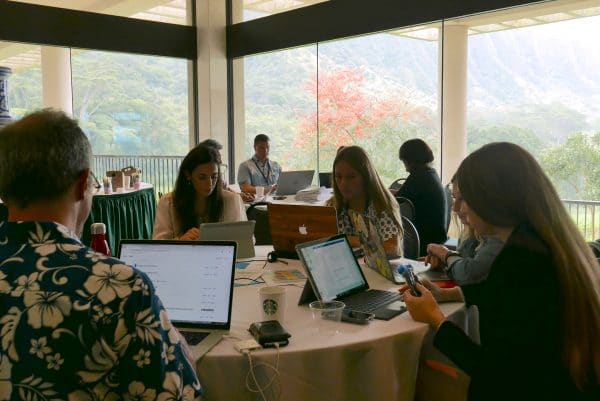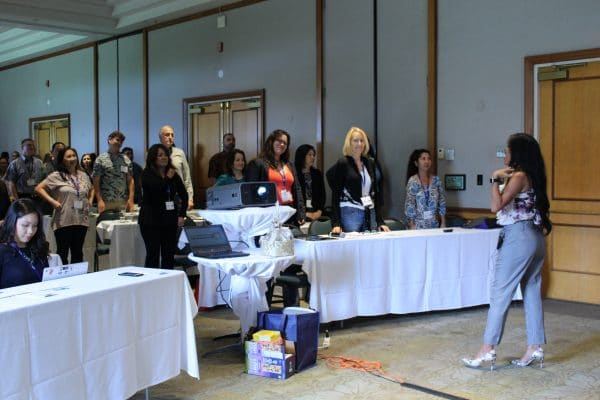Conference Documentation Sprint
Improving the Conference Experience
Conferences are an opportunity for a professional community to come together and exchange thoughts, trends and experiences in their field. This can be incredibly enriching and frustratingly overwhelming. At the end of the conference, one often leaves with their head swirling with new ideas, and their hands empty. Too many simultaneous presentations, in often short time slots, packed with information. To make conferences less top down and more hands on, different conference formats such as barcamps are established and tested in many different fields.
For Curtis Michelson of Minds Alert, barcamps were one tool to improve the conference experience, but it wasn’t enough. He also wanted to document the event, and give something lasting to the participants of the conference he was designing together with the Honolulu Chapter of the Project Management Institute. And so he approached us at Book Sprints to see how we could document the one-day Professional Development Day and make a book out of it. The idea was to create something different from conference proceedings, something that would capture the event, the audience and interactions.

View from the conference center in O’ahu, photo by Bhawna Mundotia
Facilitating the Conference Sprint
After consulting with us, Curtis organized a group of volunteer writers, students from the local universities, many of them from affiliate fields and interested in project management. I joined the conference to facilitate the group of writers and coordinate the book production. We set them up to use Editoria, our online collaborative authoring platform. Our book designer Julien created a template for a conference session in Editoria that served as a blueprint for the volunteer note takers. Curtis had thought of the sections each session should cover, such as key takeaways, quotes and slides from the presenter, and questions and reactions from the audience.

The conference reporter team
The writers then chose sessions they were interested in and which they would document. We made sure they always had one session off in between to complete and edit their notes. That turned out to be very little time. The pressure to finish on time was intensely felt. The book was presented on a big screen in front of all conference attendees at the closing session of the conference at 5pm. While some of the writers were typing away to document the closing keynote, other writers were still editing the texts of earlier sessions. Book designer Julien was frantically cleaning up the formatting. He was at that time sitting in a bar in San Francisco, where it was already Friday night, and his colleagues celebrating a successful workshop. Once the closing keynote was over, the book was projected on the big screen – looking beautiful, with a chapter on each conference sessions, photos of the presenters and the audience activities!

One of the conference sessions
Conference partners Mauka Digital had already prepared the website pmibook.com before the conference, and in a phone call had established a workflow with Julien to integrate the html content from Editoria on that website. Here you can see the book today.
Designing Collaborative Methodologies
Since then, others have become interested in working on conference books, and we are looking at strategies of how to come up with a methodology for conferences. We have often wondered how we could help to create something more tangible at conferences. In our experience, it is not only immensely satisfying to capture the exchange of thought and have something to show for it immediately. We also find that working together on a publication focuses the debates. You can’t simply overlook your differences if you publish together as co-authors; you want to at least agree to disagree in a manner that a reader can follow.
That being said, we also reconfirmed that for us at least, the magic in a Book Sprint is more in the intense collaboration than in the time efficiency. So for a next conference, we are looking at ways to incorporate more opportunities to collaborate.
